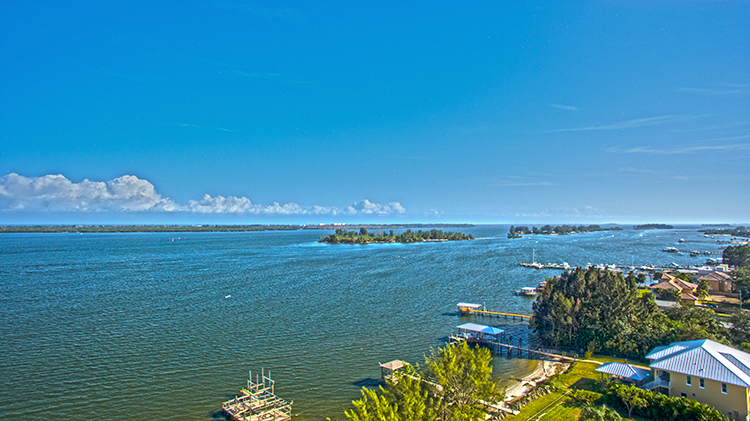
While the COVID-19 pandemic has halted or slowed many types of human activity locally and around the world, it hasn’t stopped research into understanding and restoring the troubled Indian River Lagoon.
At Harbor Branch Oceanographic Institute’s 10th annual Lagoon Research Symposium, one group of scientists detailed their successful efforts to “plant” millions pollution-filtering clams in the waterway, while another group reported finding 200 new species in the 156-mile-long estuary.
“The lagoon didn’t shut down. All the issues didn’t shut down,” event organizer and HBOI professor Dennis Hanisak told the online gathering that included more than 300 participants and observers. “Research continues in the lagoon . . . conducted during and in spite of the pandemic.”
In fact, judging by the scores of oral presentations and virtual posters displayed by academics, local governments, nonprofits and state agencies during the two-day virtual meeting, a great deal of research got done over the past year.
Scientists presented their findings about a wide range of topics, including gauging the effects of climate change on fish, plants, and invertebrates; curbing the amount of nitrogen and phosphorus in the lagoon; and identifying new species that are showing up in the waterway.
Efforts to identify a mysterious new algae bloom that discolored lagoon waters from Titusville to Melbourne last summer and fall and then abruptly disappeared was the focus of a presentation by Stephanie Keller Abbe, a researcher with the Florida Fish and Wildlife Research Institute.
The unfamiliar cyanobacteria showed little to no levels of toxin but caused localized fish kills, according to Abbe. By year’s end, likely owing to cooler water temperatures, it disappeared, she said. Abbe and her colleagues are still trying to figure out what it was.
Florida Institute of Technology graduate student Abigail Gering demonstrated how to use a collection of recycled plastic bottle caps to decrease concentrations of nitrogen in the lagoon.
Gering and her colleagues placed mesh bags stuffed with bottle caps in tanks filled with lagoon water and allowed bacteria to grow on them. These “good” bacteria, she said, could convert and remove excess nitrogen to clean the water. The scientists found the simple system could reduce nitrogen levels by up to 75 percent in an experimental setting.
“I believe it could perform at a larger scale,” Gering told the symposium.
Along that the same line, Todd Osborne of the University of Florida’s marine lab showed how restoring native clam populations can boost water quality and reduce algae and nutrients in the estuary.
Osborne and his fellow scientists started with 39 so-called “Super Clams” that survived harmful algae blooms in the Mosquito Lagoon, reared more of them in the lab, and then planted them between the northern estuary and Sebastian Inlet.
By last October, he said, they had three million of the shellfish growing in the lagoon with a 96 percent survival rate. Osborne calculated the animals now filter 30 million gallons of lagoon water daily across all the sites.
“We’re going to plant eight million more this year,” he said.
Perhaps most amazing, Holly Sweat of the Smithsonian Marine Institute explained how the Fort Pierce institution’s new species inventory of animals living in the lagoon discovered 200 species that are new to the Institute’s list, which was created in 1994.
“We used to have 14 species of sponges,” Sweat said. “Now we have 81.”
She said the project shows “how little we really know about Indian River Lagoon biodiversity.”



